Shows
58th Venice Biennale Part 6: Exhibitions Around Venice
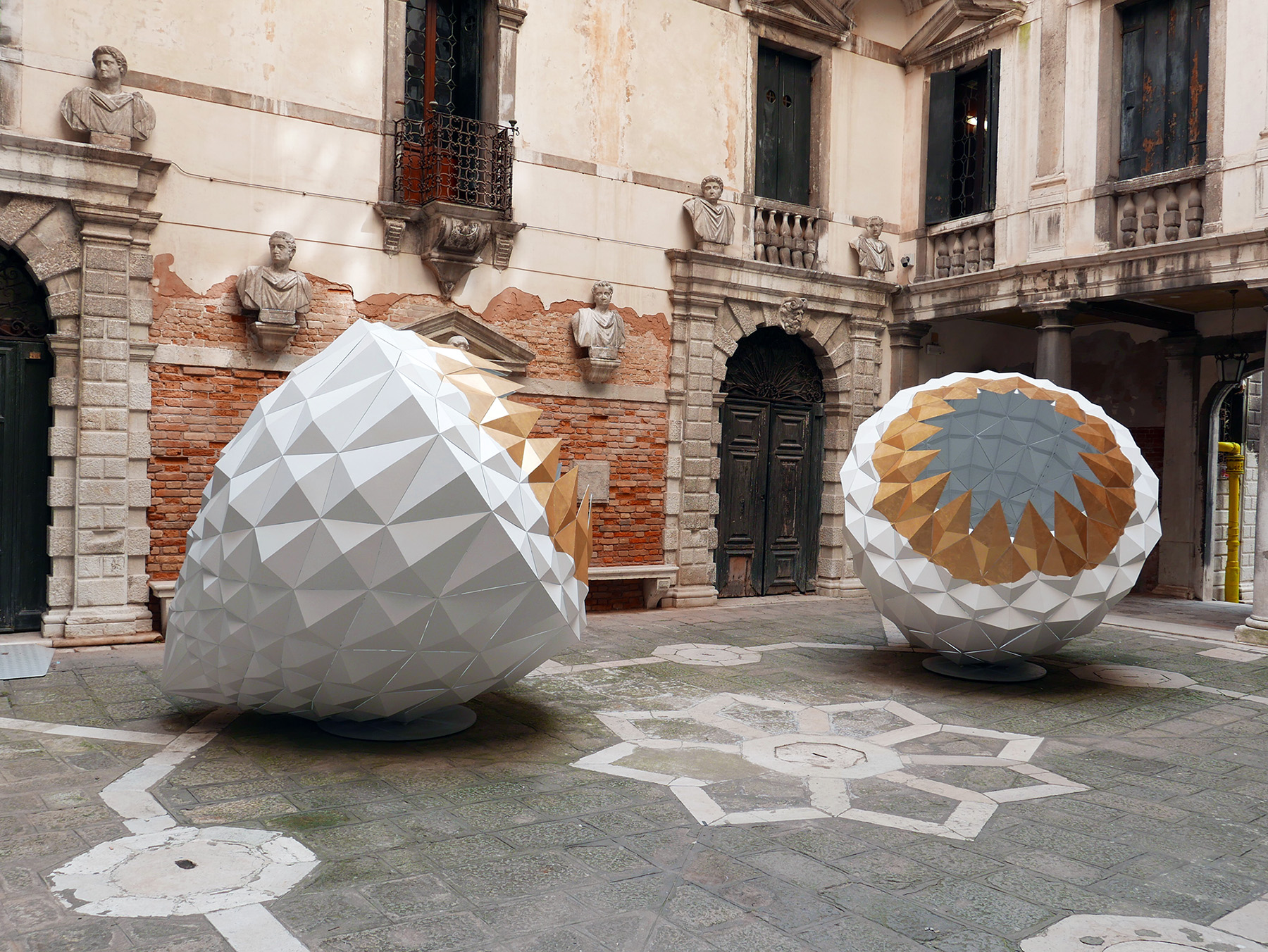

The Venice Biennale attracts more than 600,000 cultural tourists to the sinking island city, directing them not only to the eastern Arsenale and Giardini compounds but to sites beyond the tour-choked locales around the Rialto Bridge and Piazza San Marco. This makes the Biennale a major occasion not only for national artistic visibility but for independent exhibitions looking to reach new audiences. The city’s existing cultural institutions all host exhibitions. This year’s notable ones were the Jannis Kounellis survey at Fondazione Prada; Luc Tuyman’s monographic show at Palazzo Grassi; and the anthology of Alberto Burri’s works at the Fondazione Giorgio Cini. This being mercantile Venice, many of the temporary exhibitions are backed by commercial galleries looking to acquire prestige and collectors for their artists through the loose affiliation or simple concurrence with the Biennale. That said, most of the exhibitions are at least decent and often very good, and offer the chance to see the interiors of the city’s grand palazzos. Here’s a look at six exhibitions from around Venice featuring artists from Asia.
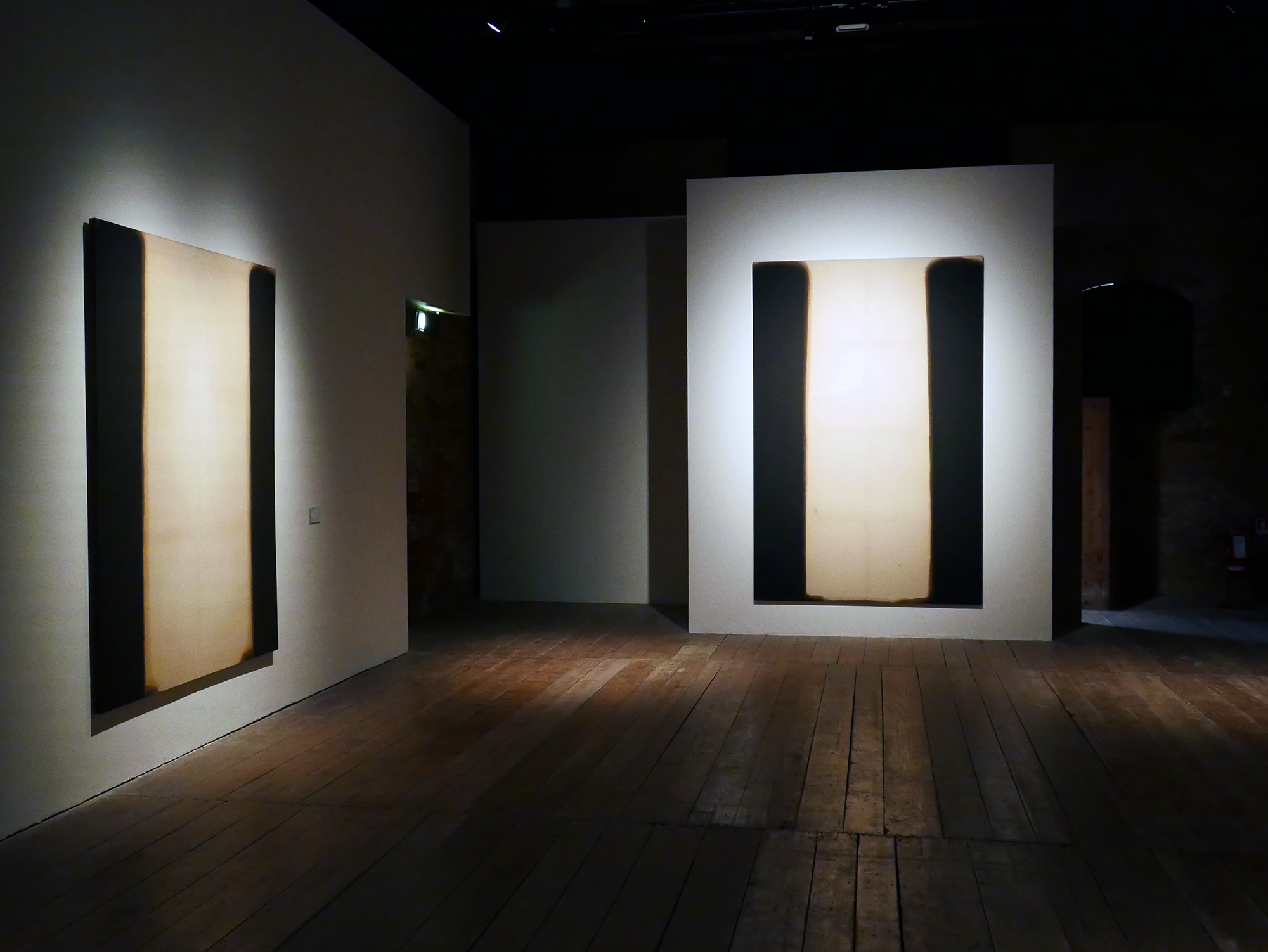
Yun Hyong-Keun
National Museum of Modern and Contemporary Art, Korea
May 11–Nov 24
Presented by the National Museum of Modern and Contemporary Art (MMCA), Korea, at Palazzo Fortuny, was a retrospective of the late painter Yun Hyong-Keun (1928–2007), one of the figures associated with the postwar Korean art movement of Dansaekhwa (“monochrome”). The exhibition was based on a retrospective curated by Kim Inhye and presented at MMCA Seoul in 2018. Yun is known for his austere abstractions of boxy forms made by combining two raw pigments—burnt umber (representing the earth) and ultramarine blue (the sky)—applied with a wide brush onto raw linen or canvas in thin layers. When overlapped, the two colors appear almost as a monochromatic black. This extremely minimal formula sustained a wide variety of experimentation across four decades of work, as evident from the exhibition. Along with three floors of Yun’s paintings, in the building’s attic was a recreation of Yun’s studio, with notebooks and objects from his collection. While his paintings are exemplary works of modernism in their search for essential forms and gestures, they also represent a reprieve from the traumatic circumstances of Yun’s life. He was jailed four times, and was once nearly executed by the South Korean government for protesting the postwar US military occupation of Seoul. Then, when the North Korean army occupied the city in 1950, he was forced into labor, and was imprisoned again in 1956, after the war, by the South Korean government for “collaboration” with the North. He only began painting in his distinctive style after he was jailed for the fourth time and blacklisted by the government in 1973 for speaking out against an instance of corruption at the school where he taught. That his work is so silent and determined, and that he remained so committed to finding a distinctive, elemental form of Korean modern art despite his political persecution, are the two overlapping narratives that make Yun’s paintings fascinating to encounter in any setting.
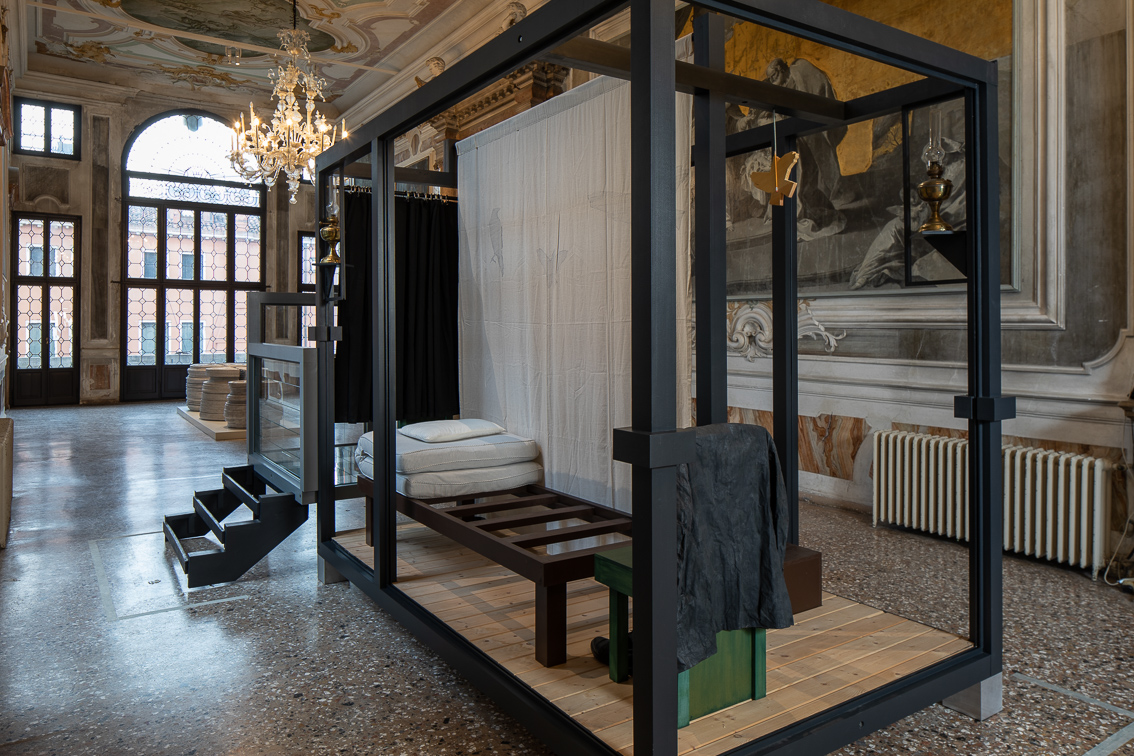
“The Spark is You”
Parasol Unit
May 9–Nov 23
There is an official national pavilion for the Islamic Republic of Iran, but additionally the London-based Parasol Unit Foundation for Contemporary Art presented nine contemporary Iranian artists in the collateral exhibition “The Spark is You” at the Conservatorio di Musica Benedetto Marcello di Venezia. Curated by Ziba Ardalan, founder and director of Parasol Unit, “The Spark is You” celebrates European-Persian dialogue, and marks the 200th anniversary of Johann Wolfgang von Goethe’s book of poetry West-East Divan (1819), dedicated to the 14th-century Persian poet Hafez. Each of the nine artists received an education in Persian/Iranian poetry, though how it is seen in their works varies considerably. YZ Kami’s paintings of faces, for instance, burn with a lyrical intensity while Sahand Hesamiyan’s pair of massive metal sculptures Forough (2016)—multi-sided forms with golden tips—echo the forms of tradition Persian architecture with a contemporary, machinic precision. Farideh Lashai’s multimedia installation When I Count, There Are Only You . . . But When I Look, There Is Only a Shadow (2012–13) is based on Francisco Goya’s engravings “The Disasters of War” (1810–20), except the figures from the original 82 images have been digitally removed, appearing only when an animated spotlight moves across their surface. Siah Armajani’s Edgar Allan Poe’s Study (2008) is an austere, boxy architectural installation that features allusions to the writer’s life and works. Like many collateral exhibitions in Venice, a European city whose cultural life was linked to the cultures east of the Mediterranean via trade and warfare, the setting itself of “The Spark is You” adds layers of historical resonance to contemporary artworks addressing the impact of European cultures.
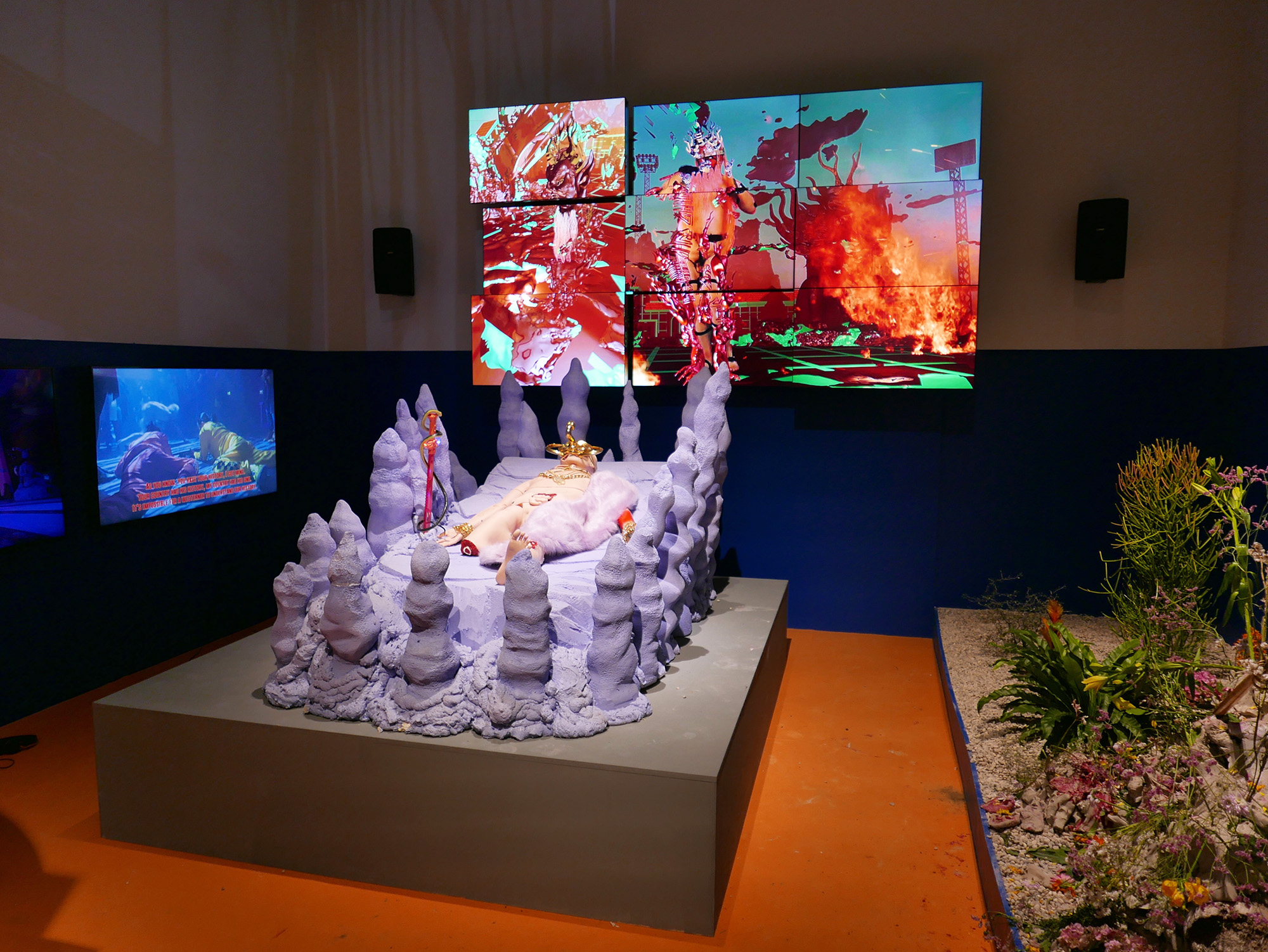
“Entropy”
Faurschou Foundation
May 10–Sep 1
The Copenhagen- and Beijing-based Faurschou Foundation brought its 2018 exhibition “Entropy” from its space in the 798 Arts District to the island of San Giorgio Maggiore. Each of the seven artists in the show were given their own discrete gallery space. While Liu Wei’s installation of massive aluminum-plated forms Microworld (2018) from the Beijing edition of the show ended up in Ralph Rugoff’s central exhibition, an installation of a gigantic rock-like form titled The Stone (2006), vaguely resembling the moon, sits alone like an extraterrestrial specimen in an all-gray room as part of “Entropy.” Cryptic, part-cement, part-plaster human forms by Yu Ji, who was also represented in the central exhibition with works from her “Flesh in Stone” (2012–18) series, were on view alongside video documentation of her process-based sculptural practice and carved wooden architectural columns placed on a bed of dirt. Meanwhile, Yang Fudong’s videos Dawn Breaking – Imperial Seal (2018) and a pair of wall pieces titled Nietzsche Text Painting (2018) occupied a gallery illuminated and painted in red. The wild universe of Chen Tianzhuo was evoked through an installation of wildly extravagant, ritualistic-looking sculptures and videos of recent live performances, including ISHVARA (2017). He An’s project Love Child (2015) consists of a row 16 metal doors that periodically open—leading to nowhere—and then slam shut, like something from a horror film. Like the Iranian-focused show “The Spark is You,” Faurschou’s China-focused exhibition “Entropy” presents a more sophisticated and accessible alternative to the national pavilion, which hasn’t, in the past, always presented its country’s artists in ways that attract the interest of the Biennale crowd.
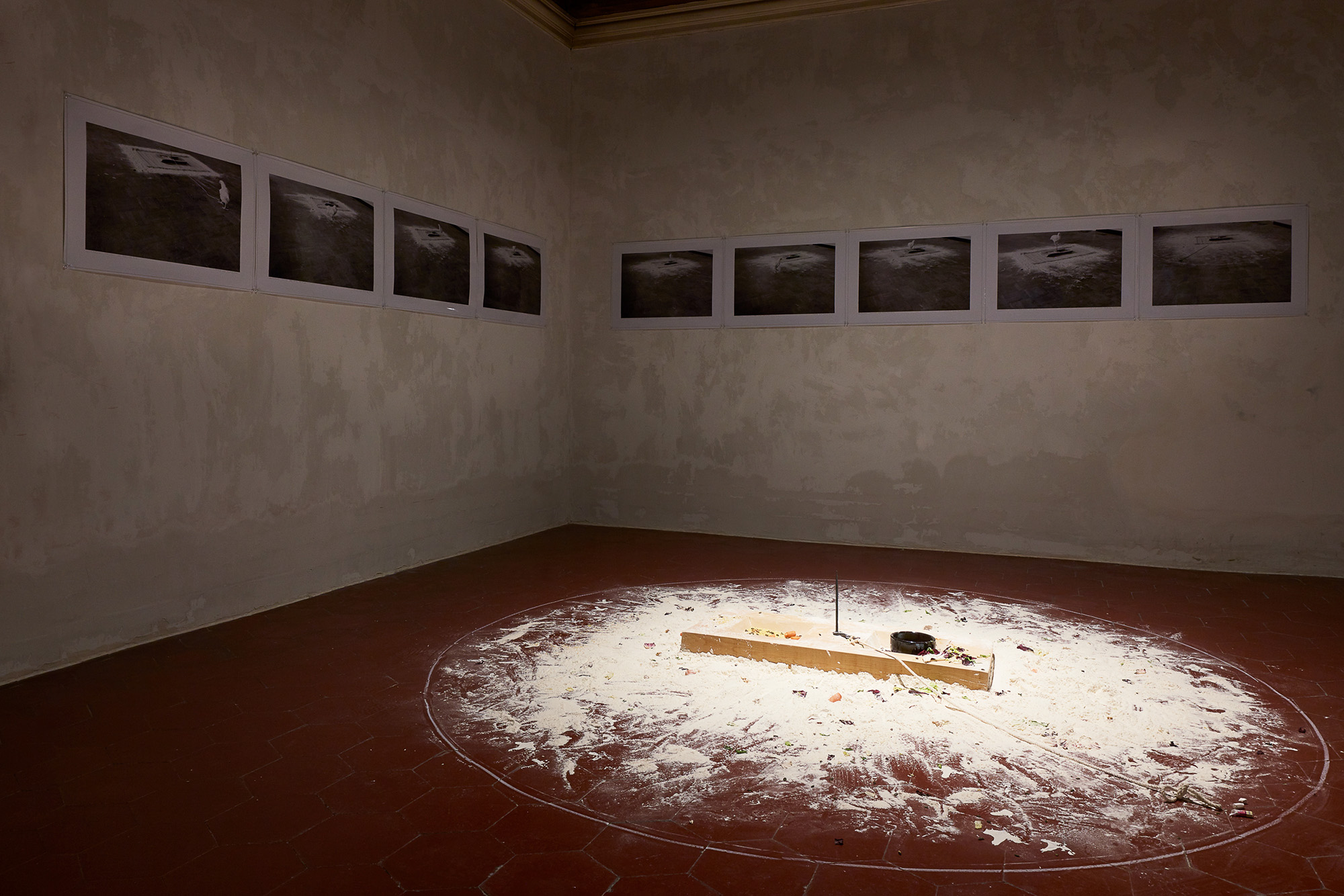
Lee Kang-So
“Becoming”
Gallery Hyundai
May 7–Jun 30
Adapted from a survey first staged at Gallery Hyundai in Seoul in September 2018, “Becoming,” at Palazzo Caboto, spotlights the pioneering performance artist Lee Kang-So. Lee’s works are rooted in the aesthetic philosophy of Pungryu, a Korean notion of the coexistence of all things in harmony with the structural flow of nature (qi). That outlook translates to many participatory works, such as Becoming and Extinction (1974), a pile of apples, ready to be eaten, resting on a bed of straw at the exhibition’s opening, and his iconic work Untitled 75031 (1975/2019), for which a chicken walks around in a pile of chalk for several days, leaving its traces on the floor. Similarly restaged is Void (1971/2019), an installation comprising bunches of tall reeds that have been painted white, a color that the artist returns to in many of his recently produced sculptural works on the top floor, perhaps for its lack of ideological affiliation. Painting (Event 77-2) (1977) is another performative work, in which the artist covered himself entirely in gray paint, and then used a gray canvas to remove all the paint from his body, showing the canvas on the floor as a painting. “Becoming” is a compact and concise survey of a historically important artist still little-known outside of Seoul, despite his participation in the 1975 Biennale of Paris.
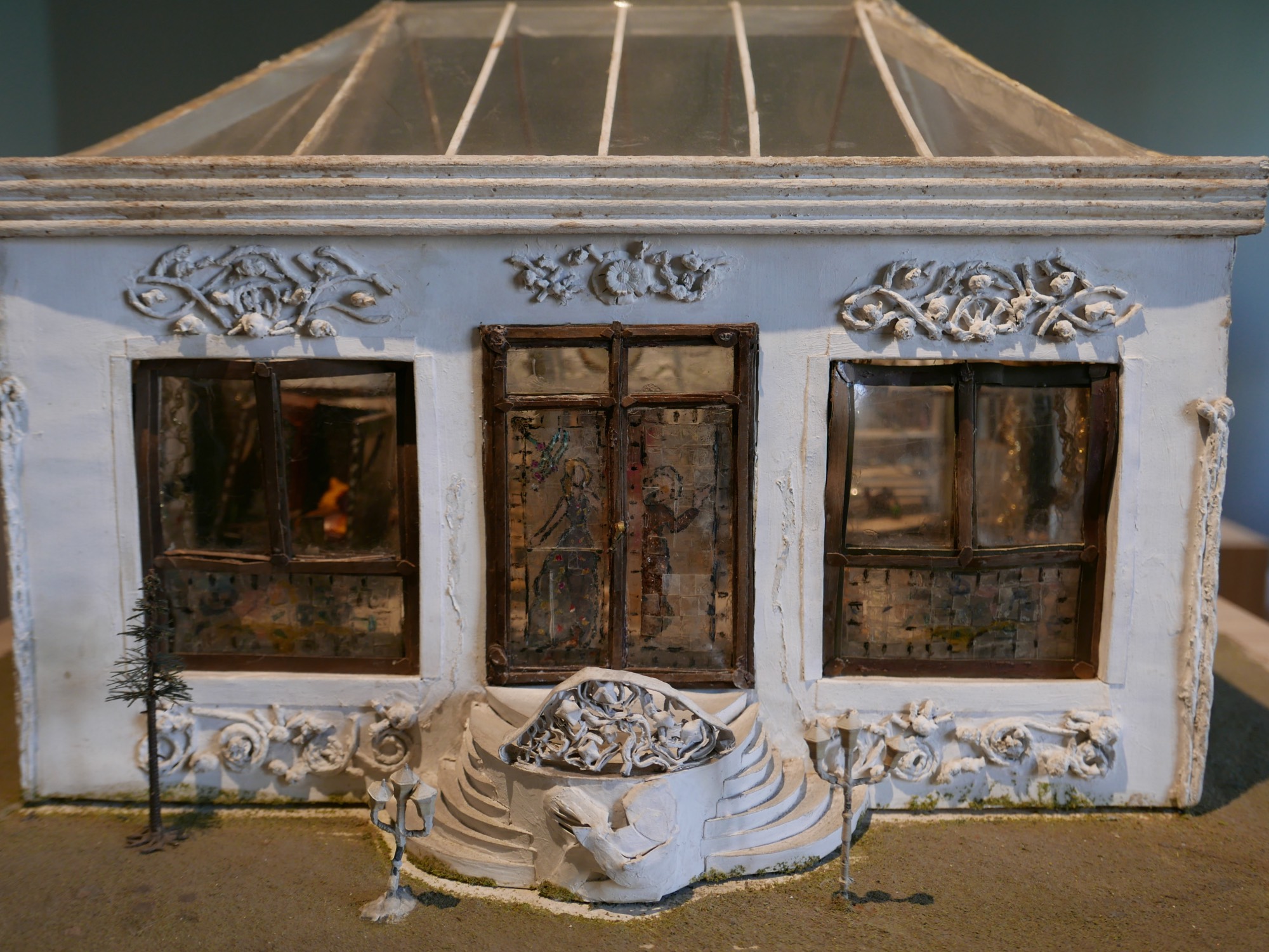
“Heartbreak”
Ruya Maps
May 11–Nov 24
Alongside the Iraq Pavilion, organized by the Ruya Foundation, the Ruya Maps initiative presented “Heartbreak,” an exhibition project curated by Tamara Chalabi and Paolo Colombo, featuring nine contemporary artists with roots in West Asia and spanning several generations. Housed in the Ca’ Del Duca hotel, the show is based on the classical story of Dido and Aeneas, recounted in Virgil’s epic The Aeneid (c. 29–19 BC) and in later European paintings and operas, including Andrea Vaccaro’s 17th-century canvas and Henry Purcell’s opera—both of which are featured in the exhibition. In the story, Aeneas, a refugee from Troy (in northwestern Asia Minor, today’s Turkey), ends up in Carthage (in modern day Tunisia) where the queen Dido falls in love with him. When he leaves for Italy in order to found Rome, she commits suicide. With the two protagonists representing various cultures of the classical-era Mediterranean, the exhibition claims to link the “east” and “west,” and themes of violence and displacement run through many works. Imad Issa explores the aftermath of the Lebanese Civil Wars (1975–90) through a series of films and clay sculptures embedded with nails and stones. Majdal Shams-based artist Randa Maddah made a video work, In View (2017), in which, using mirrors, she tries to create a single horizon line between the military encampments in the two halves of her community, divided by the ceasefire line between Israeli-occupied Golan Heights and Syria. Most beautiful are Maryam Hoseini’s delicate, graphic-edged paintings based on the 12th-century Persian poet Nizami’s tale of Layla and Majnun, whose forbidden love led to Layla’s imprisonment and Majnun’s madness. Rarely if ever shown, though perhaps a bit out of context thematically, were Füsun Onur’s dollhouse sculptures from the 1970s and other mixed-media works that evoke the fragility of childhood and of memory. There’s heartbreak all over the world, though the traumas of war and exile still seem incomparably greater than the vicissitudes of romantic love.

“She Persists”
Heist
May 11–Jun 10
The #MeToo movement had its own pavilion at the Palazzo Benzon, in the Rose McGowan-starring exhibition “She Persists,” which along with the actor’s serious attempt at dance-based performance art in director Tonia Arapovic’s video installation Indecision IV (2018), featured around 20 artists, many from South Asia, curated by Heist Gallery founder Mashael al-Rushaid and art historian Sona Datta. The show was anchored art historically in white feminism, with Judy Chicago’s “Women and Smoke” series (1971–72) of the artist in rural landscapes covered in curls of colored smoke, an abstract sculpture made from casting spray foam in aluminum by New York-based Lynda Benglis, and the 1989 poster by the Guerilla Girls, “Do women have to be naked to get into the Met Museum?” The rest of the exhibition featured several artists based in London and many women of color working today. There was Chitra Ganesh’s painting of a female sage and another figure with a camera for a head, Transmission (2012); and Aisha Abid Hussain’s photo series Two Not Together (2014), which riffs on wedding portraiture, by having two women masquerade as an unhappy-looking bride and groom at the ceremony. Mithu Sen’s animated video installation I have only one language; it is not mine (2014),depicts the artist staying in a Kerala orphanage for young girls in the persona of her alter-ego Mago who speaks in gibberish. Hamra Abbas’s photo installation Paradise Bath (2009) depicts the artist washing the body of a white woman in a historical hamam, drawing attention to the historical orientalist trope. The works on view created an interesting dialogue around contemporary interpretations of feminism in contexts beyond Hollywood and the New York-London media. However, the structural dynamic of presenting white women as the originators of the feminist discourses in contemporary art seemed to this white male viewer to be patently problematic—particularly when, in the South Asian context, groups such as Women’s Action Forum, which artist Lala Rukh was involved with in Pakistan, could have been presented instead, alongside, for instance, New York-based artists of color like Cuban-born Ana Mendieta, or the African-American conceptualist Adrian Piper, both of whose works are far more transgressive, intersectional, and conceptually challenging than the neo-hippie, nudity-as-freedom simplicity of Judy Chicago’s projects.
HG Masters is the deputy editor and deputy publisher of ArtAsiaPacific.







